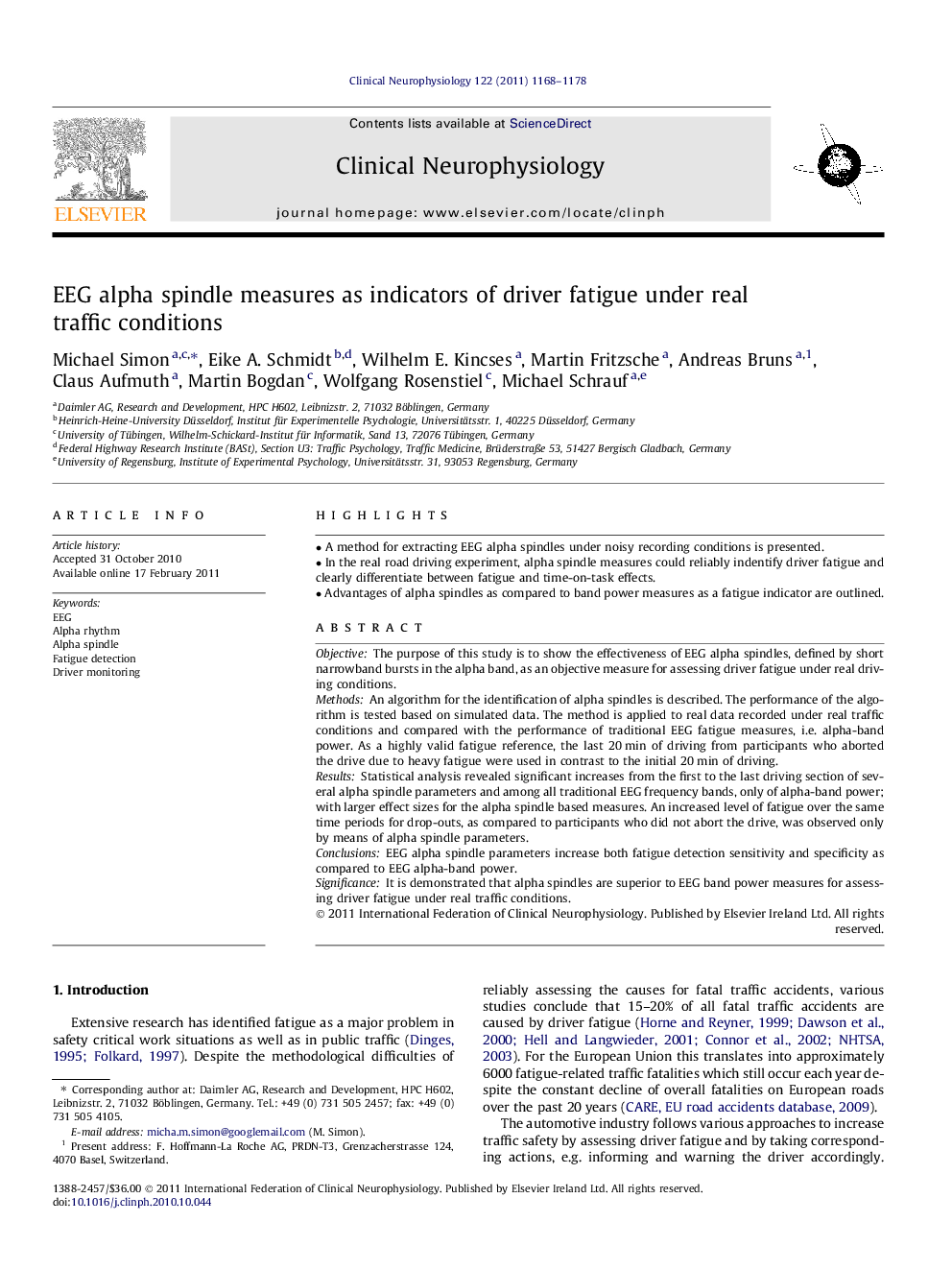| Article ID | Journal | Published Year | Pages | File Type |
|---|---|---|---|---|
| 3044297 | Clinical Neurophysiology | 2011 | 11 Pages |
ObjectiveThe purpose of this study is to show the effectiveness of EEG alpha spindles, defined by short narrowband bursts in the alpha band, as an objective measure for assessing driver fatigue under real driving conditions.MethodsAn algorithm for the identification of alpha spindles is described. The performance of the algorithm is tested based on simulated data. The method is applied to real data recorded under real traffic conditions and compared with the performance of traditional EEG fatigue measures, i.e. alpha-band power. As a highly valid fatigue reference, the last 20 min of driving from participants who aborted the drive due to heavy fatigue were used in contrast to the initial 20 min of driving.ResultsStatistical analysis revealed significant increases from the first to the last driving section of several alpha spindle parameters and among all traditional EEG frequency bands, only of alpha-band power; with larger effect sizes for the alpha spindle based measures. An increased level of fatigue over the same time periods for drop-outs, as compared to participants who did not abort the drive, was observed only by means of alpha spindle parameters.ConclusionsEEG alpha spindle parameters increase both fatigue detection sensitivity and specificity as compared to EEG alpha-band power.SignificanceIt is demonstrated that alpha spindles are superior to EEG band power measures for assessing driver fatigue under real traffic conditions.
► A method for extracting EEG alpha spindles under noisy recording conditions is presented. ► In the real road driving experiment, alpha spindle measures could reliably indentify driver fatigue and clearly differentiate between fatigue and time-on-task effects. ► Advantages of alpha spindles as compared to band power measures as a fatigue indicator are outlined.
